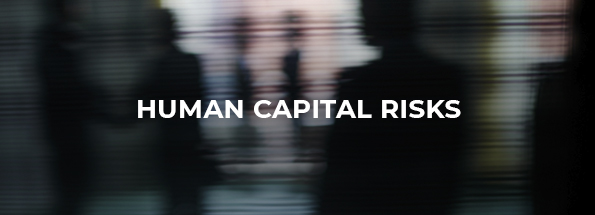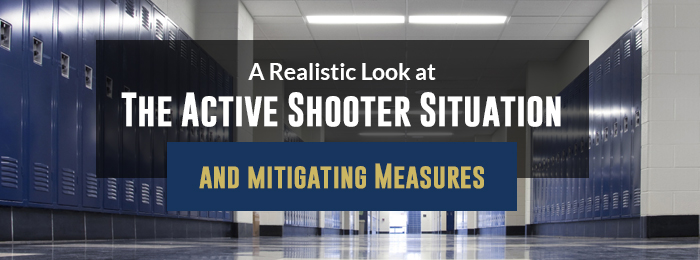Ignorance Is Bliss – Until Reality Hits

Even before COVID-19 created the social and economic challenges we are currently working through, brick and mortar business owners large and small understood a basic concept that most of the world wasn’t thinking much about: whenever people gather in close proximity, risk is present. The duality here, of course, is that human nature craves connection, but it also endeavors to avoid risk. Or it chooses to ignore it.
Unfortunately, many of the risks business owners face can be unseen, both for themselves and their customers, and those risks can’t be ignored. Regardless of the type of business, the moment the doors open, unique security-related policy and procedure challenges await. The best businesses implement their security-related policy and procedure measures seamlessly – they become part of the experience. This experience is created by design to ensure the health and safety of those both rendering services (staff) and those transacting payments (customers). If insurance teaches us anything, though, it’s that too often ignorance is bliss until reality hits. And if the security design is bad, the claim is worse.
As restrictions are slowly lifted and businesses around the world contemplate re-opening, every owner – from the small neighborhood grocery store with one door to the 100-floor commercial city building with 15 exits – should be using their time right now to examine what re-opening in the current normal looks like. Any measures that have been developed previously to keep customers, employees and visitors safe may need to be re-established or, at a minimum, revisited to conform with current recommendations from both scientific and governmental authorities.
It can’t be stressed enough, though: revisiting (or in some cases rethinking) security-related policy or procedure isn’t something that happens just because a huge reality event like COVID-19 creates global upheaval. Practicing good habits requires consistency, and it’s with that in mind that our team is currently sharing a series of insights, stories and applicable tips on security that any industry can use over on the Lowers & Associates LinkedIn page.
To provide some guidance for those reevaluating their security measures or that are specifically focused on re-opening, I’ve created a list of 10 suggested actions ANY business can take to remove risk and eliminate potential for loss at any time.
1. Reassess security resource allocation based on operational need and risk.
If you have a business portfolio with multiple locations, consideration should be given to the specific business environment, nature of the threats, existence of any unusual circumstances, and the capacity of local law enforcement to respond.
2.Limit the number of entry/exit points for employees and visitors.
Tightly control ingress and egress for safety and security optimization. Examine operational feasibility before implementation.
3. Consider the reception area.
If security personnel are employed at the location, what role will they now play at the reception area to assist in the enforcement of new practices?
4. Access control measures and mechanisms dependent on fingerprint or a punch code require new safety protocols to be implemented.
This includes visitor management software and the use of tablets for registration.
5. CCTV coverage designed for cash handling or robbery identification should have expanded focal points to include more than just a face shot.
With the use of face masks becoming more frequent for the foreseeable future, at least one camera angle should include the entire body, including shoes. (criminals typically do not ditch their shoes after committing a robbery)
6. Re-evaluate security post orders.
The post orders must reflect any new duties performed and have a sound rationale for deviations. It is possible that actual security posts change based on organizational necessity. Examine any vulnerabilities that exist and how to overcome the risks.
7. Provide written notice to all employees if the security policies or procedures are being altered.
Even if these changes are temporary, this is necessary to ensure expectations are clear.
8. Initiate and document COVID-19 safety training.
Specifically, for security personnel and/or designated employees working the “front lines” of your business. This can expand to all staff as a general safety bulletin and acknowledgement.
9. Expand workplace violence policy (e.g. domestic violence prevention and response) to include all employees working from home.
Work with the Human Resources Department to provide “hotlines” or other resources available should assistance be required. In addition, identify and assess potential insider threats, as more employees and contractors are working remote.
10. Develop a brief but informative training program on basic techniques to de-escalate aggressive behavior in the workplace.
This is especially important for those business that are “customer facing” (e.g. retail/hospitality) or for businesses with a large number of on-site staff and visitors.



